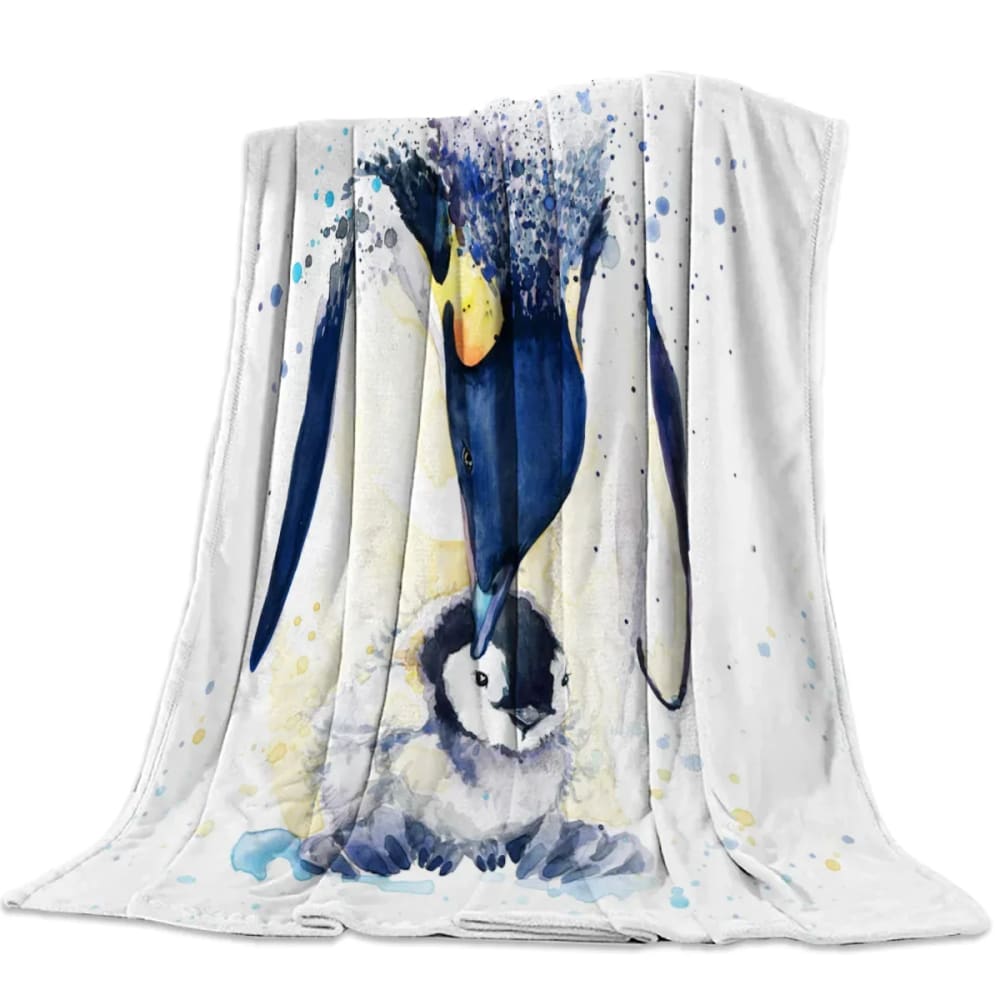Can Penguins Cry? Exploring the Emotional Lives of Penguins
The Myth of Penguin Tears
One of the most common questions people have about penguins is whether or not they can cry. Penguins are known for their adorably expressive faces, and it's easy to imagine them shedding tears when they're sad or upset. However, despite this popular belief, penguins do not have tear ducts like humans do. This means that they are not physically capable of producing tears. So, if penguins can't cry, how do they express their emotions?
Instead of tears, penguins rely on their body language to communicate their feelings. They may display certain behaviors, such as vocalizing, flapping their wings, or bowing to each other, as a way to express emotions like happiness, sadness, or aggression. It's fascinating to observe the wide range of behaviors and vocalizations that penguins use to communicate with each other.
The Language of Flipper Flapping
One way that penguins express their emotions is through flipper flapping. This behavior involves repeatedly slapping their flippers against their bodies, creating a distinct sound. Penguins often engage in flipper flapping when they are excited, playing, or trying to get attention. It's their way of saying, "Look at me!" or "I'm feeling great!" Flipper flapping can be a joyous display of emotion that is both fascinating and entertaining to witness.
Another interesting behavior that penguins use to communicate is called "ecstatic display." During this display, a penguin will stretch its body out, point its bill upwards, and emit loud vocalizations. This behavior is often seen during courtship rituals or when penguins are very happy. It's a beautiful and expressive way for penguins to showcase their emotions.
Furthermore, penguins also use beak displays to convey their feelings. They may open their beaks wide or bow their heads as a way to communicate dominance or submission. These physical displays are essential in penguin society for establishing hierarchy and maintaining social order.
The Melodic Language of Penguin Vocalizations
In addition to their physical displays, penguins use vocalizations to express their emotions. Each species of penguin has its unique repertoire of calls and songs. For example, the African penguin makes a "braying" sound that is reminiscent of a donkey, while the Emperor penguin produces a hauntingly beautiful song that can be heard underwater.
Penguins use vocalizations for various purposes, including locating their mates or chicks within a crowded colony, defending their territory, and communicating danger. These vocalizations can range from high-pitched squawks and trills to low-frequency honks and hoots. By listening to these unique calls, penguins can identify each other and convey important messages within their social groups.
Research has shown that penguins are capable of recognizing each other's vocalizations and responding accordingly. This ability to communicate through the language of sound is vital for their survival in the often harsh and challenging environments they inhabit.
The Emotional Lives of Penguins
While penguins may not be able to cry tears, it doesn't mean that they don't experience emotions. Like many other animals, penguins do have feelings and exhibit a wide range of emotional behaviors.
One emotion that penguins commonly experience is love. Penguins form strong pair bonds with their mates and are known for their loyalty and faithfulness. They engage in courtship rituals, share parenting duties, and show affection towards each other. The bond between penguin mates is a beautiful example of love in the animal kingdom.
The Parenting Instinct
Parental care is another aspect of penguin life that highlights their emotional nature. Male and female penguins take turns incubating their eggs and raising their chicks. They diligently protect their offspring and provide them with warmth and nourishment. The dedication and selflessness displayed by penguin parents demonstrate their deep emotional connection to their young.
Moreover, penguins can also experience grief and loss. When a mate or chick dies, penguins may go through a mourning period. They may display signs of sadness, such as decreased appetite, lethargy, or social withdrawal. These behaviors are a testament to the depth of emotion that penguins are capable of feeling.
Beyond their personal relationships, penguins also exhibit a sense of community and cooperation within their colonies. They work together to huddle for warmth, protect each other from predators, and share resources. This strong sense of social bonding and collaboration is evidence of the complex emotions that penguins possess.
The Challenges of Antarctic Life
Living in the harsh environments of Antarctica also presents emotional challenges for penguins. They must endure extreme weather conditions, long periods without food, and the constant threat of predators. These challenges can cause stress and anxiety among penguins, just as they would for any living being.
However, despite these difficulties, penguins have adapted and developed strategies to cope with their emotional stress. They rely on their social networks and cooperative behaviors to support each other and increase their chances of survival. These resilience and coping mechanisms showcase the emotional intelligence and strength of these incredible creatures.
The Fascinating World of Penguin Emotions
While penguins may not cry tears like humans do, they possess a rich and complex emotional life. Through their physical displays, vocalizations, and social interactions, penguins express a wide range of emotions and communicate with each other effectively. Their ability to form deep and lasting bonds, experience love and grief, and navigate the challenges of their environment highlights the remarkable emotional intelligence of these remarkable birds.
The Future of Penguin Emotional Research
Studying the emotions of penguins is an ongoing area of research, with scientists continuously working to deepen our understanding of these fascinating creatures. By learning more about how penguins experience and express their emotions, we can gain insights into the emotional lives of animals in general, as well as the connections between human and animal emotions.
As we continue to uncover the depths of penguin emotions, we can develop a deeper appreciation for the complexity and beauty of the natural world. Penguins may not be able to cry tears, but they certainly have a lot to say, if we take the time to listen.
The Power of Penguin Emotions
Let the world of penguin emotions inspire us to cherish and protect these incredible creatures. By understanding and valuing the emotional lives of penguins, we can work towards creating a world where they can thrive and continue to bring joy and wonder to all who encounter them.



























